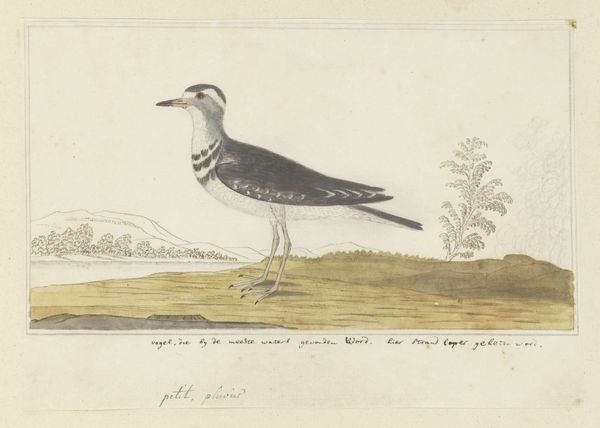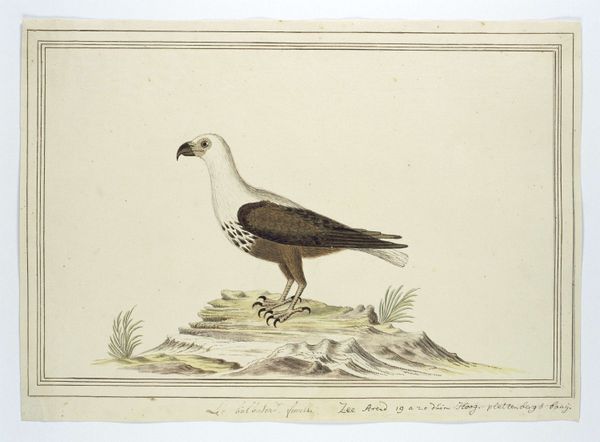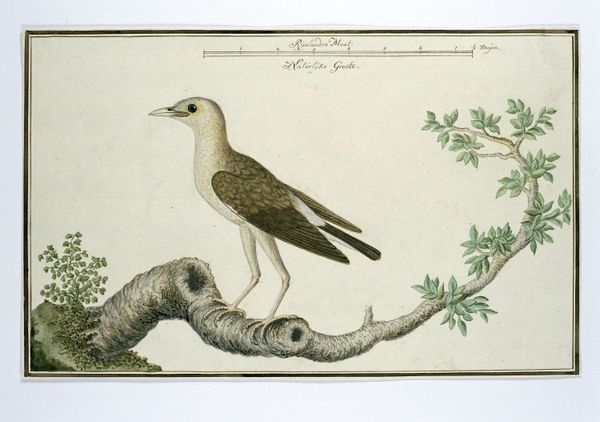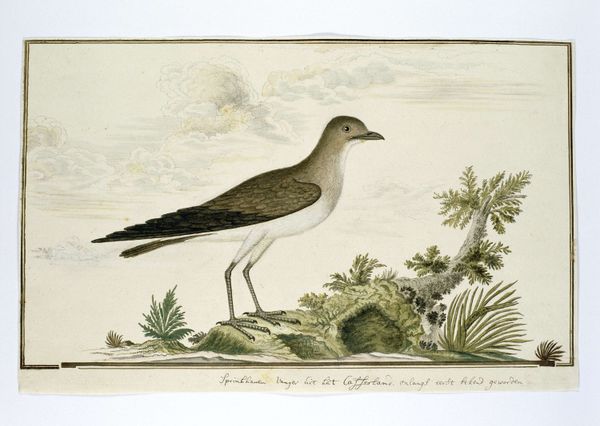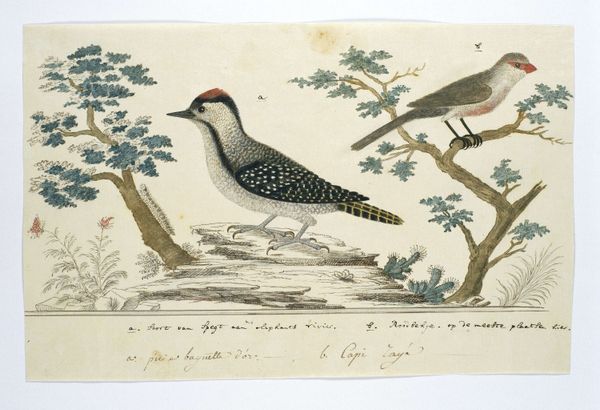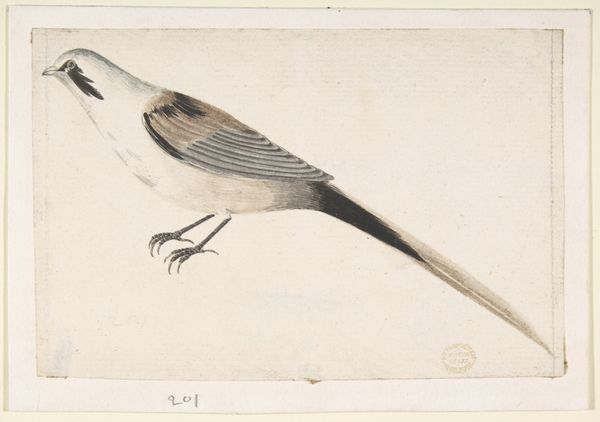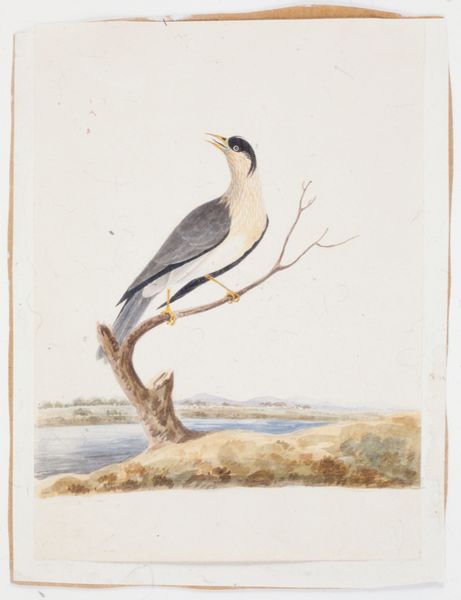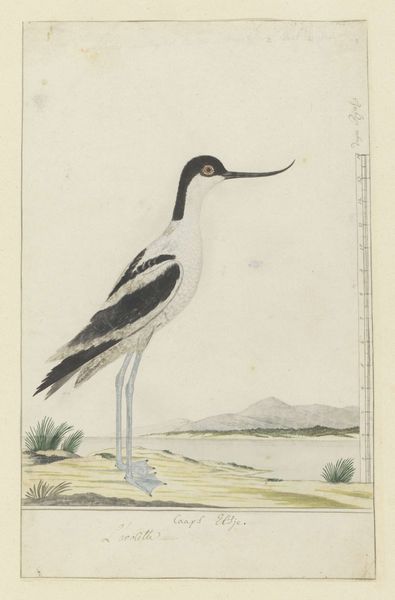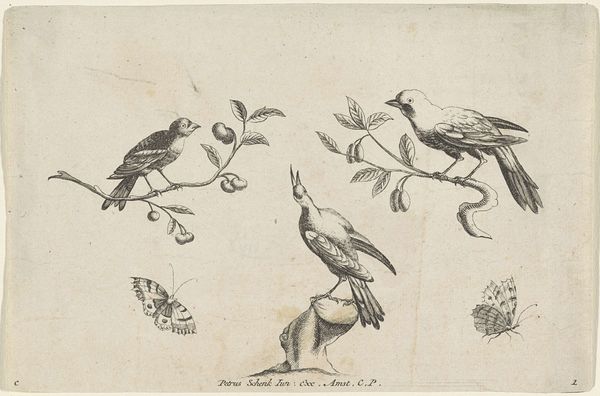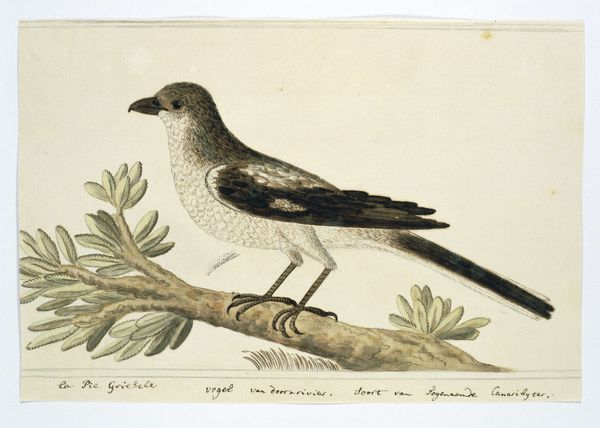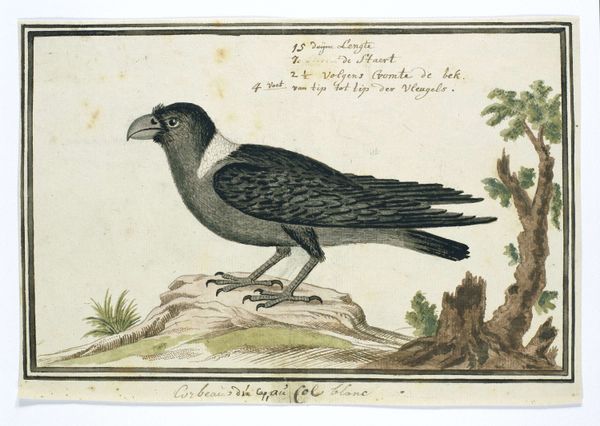
Dimensions: height 660 mm, width 480 mm, height 223 mm, width 309 mm, height 179 mm, width 281 mm
Copyright: Rijks Museum: Open Domain
Editor: Here we have Robert Jacob Gordon's "Vidua macroura (Pin-tailed whydah) and locust," created in 1778 using ink and watercolor on paper. The stark black and white of the bird, contrasted with the softer tones of the branch and the locust, really grabs my attention. What compositional elements stand out to you in this work? Curator: Immediately, one notices the formal arrangement. Gordon establishes a clear horizontal axis with the branch, grounding the composition. The stark contrast between the bird's plumage and the subtle washes of the background generates a dynamic tension. Semiotically, the upward gaze of the locust and the bird's poised stance creates an implied narrative, though the true narrative context is less significant to its appreciation as a whole. Editor: I see what you mean about the contrast. It’s almost graphic in its boldness. Does the rendering of the textures contribute to its formal qualities? Curator: Precisely. The artist employs fine linework in ink to define form and texture, which are subsequently animated with watercolor washes. Observe how the stippling in the shaded areas suggests volume and depth while maintaining a certain flatness overall. Gordon focuses on conveying the distinct textures of feather, bark, and insect carapace; their shapes and values are prioritized. Are there some aspects that bother you when studying the image’s textures? Editor: Well, maybe it's just me, but I find the treatment of the branch a little…flat. The bird and insect have a tangible presence, while the branch seems more like a backdrop. Curator: An astute observation. The relative flatness of the branch, precisely due to lack of a consistent light rendering, emphasizes the primary subject's dimensionality. The result creates a pictorial hierarchy, and suggests perhaps some specific interest in the accuracy in the bird. What initially seemed a weakness then emerges as a calculated strength, guiding the viewer's eye to the essential. Editor: I hadn't thought about it that way. So, focusing on the inherent qualities of the piece allows us to discover intentional decisions we might have otherwise missed. Thank you for showing me what is crucial in Gordon’s piece.
Comments
No comments
Be the first to comment and join the conversation on the ultimate creative platform.
